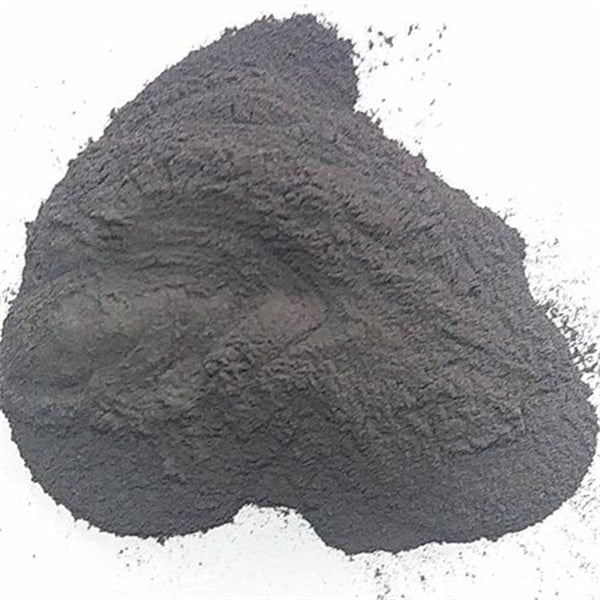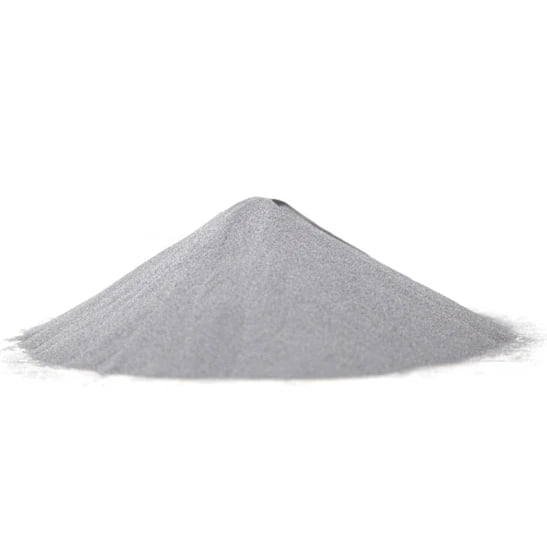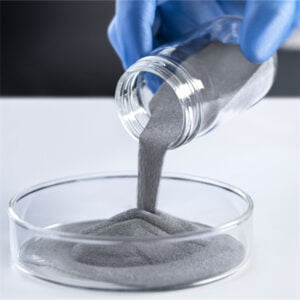Tillämpning av Binder Jetting inom flyg- och rymdindustrin
Innehållsförteckning
Imagine crafting intricate aircraft components with the precision of a 3D printer, but the strength and durability demanded by the unforgiving skies. This is the reality of Binder Jetting, an additive manufacturing technique revolutionizing the aerospace industry. By strategically depositing a liquid binder onto a bed of metal powder, layer by layer, Binder Jetting builds complex, lightweight structures that are pushing the boundaries of what’s possible in aircraft design.
Simple understanding of Binder Jetting
Binder Jetting operates similarly to a standard inkjet printer, but instead of ink, it utilizes a binding agent to adhere metal particles together. The process starts with a 3D digital model of the desired component. This model is then sliced into thin layers, which act as a blueprint for the printing process. Inside the Binder Jetting machine, a print head selectively deposits the binder onto a bed of fine metal powder, adhering the particles only in designated areas based on the digital slice. Once a layer is complete, a new layer of powder is spread, and the binding process repeats. This continues until the entire component is built, layer by layer, from the ground up.
Following the printing stage, the unbound powder is removed, leaving behind the “green” part. This part then undergoes a sintering process, where it’s exposed to high temperatures, causing the metal particles to fuse together, resulting in a robust and functional metallic component.

Binder Jetting‘s 10 Key Metal Powders
The versatility of Binder Jetting truly shines through its compatibility with a wide range of metal powders. Each powder offers unique properties, catering to specific aerospace applications. Here’s a closer look at 10 prominent metal powders taking flight with Binder Jetting:
1. Rostfritt stål 316L: Renowned for its excellent corrosion resistance and good mechanical strength, Stainless Steel 316L is a popular choice for applications like internal aircraft components, ducting, and housings that require resistance to harsh environments.
2. Inconel 625: This high-performance nickel-chromium superalloy boasts exceptional strength at elevated temperatures, making it ideal for components in hot sections of jet engines, such as combustor liners and turbine blades. Inconel 625 can withstand tremendous heat and pressure, ensuring the smooth operation of the engine.
3. Titanium 6Al-4V (Ti-6Al-4V): A champion of strength-to-weight ratio, Ti-6Al-4V offers impressive mechanical properties while remaining lightweight. This combination makes it perfect for aerospace applications where weight reduction is paramount, such as airframe components, landing gear parts, and engine mounts.
4. Aluminum Alloys (AlSi10Mg, AlSi7Mg0.3): Offering a blend of affordability, good workability, and decent strength, aluminum alloys like AlSi10Mg and AlSi7Mg0.3 are suitable for non-critical aerospace applications where weight reduction is still a priority. These alloys can be used in housings, brackets, and other non-load-bearing components.
5. Nickel Alloy 718: This versatile nickel-chromium alloy possesses high strength, good corrosion resistance, and excellent machinability. These qualities make it a valuable material for various aerospace parts, including structural components, landing gear components, and high-pressure hydraulic lines.
6. Copper: With its outstanding thermal and electrical conductivity, copper finds applications in heat exchangers, radiators, and electrical components within aircraft. Binder Jetting allows for the creation of intricate copper structures that optimize heat transfer performance.
7. Kovar: This iron-nickel-cobalt alloy boasts a thermal expansion coefficient that closely matches that of glass. This unique property makes Kovar ideal for applications where reliable sealing between metal and glass components is crucial, such as in avionics and instrument displays.
8. Invar 36: Known for its exceptionally low thermal expansion coefficient, Invar 36 finds use in precision aerospace components that require dimensional stability across varying temperatures. This material is particularly valuable for applications in optical systems and guidance instruments.
9. Tungsten Carbide: Renowned for its exceptional hardness and wear resistance, tungsten carbide is ideal for components that experience high friction and abrasion. It can be used in landing gear wear pads, cutting tools, and other components requiring superior wear performance.
10. Maraging Steel: Combining high strength with excellent toughness, maraging steel is a valuable material for aerospace applications demanding exceptional mechanical properties. This steel can be used in high-stress components like landing gear struts and critical structural elements.
Binder Jetting‘s Applications in Aerospace
Binder Jetting’s ability to create complex geometries with minimal material waste makes it a game-changer for the aerospace industry. Here’s a deep dive into how Binder Jetting is transforming various aspects of aircraft design and manufacturing:
Binder Jetting Can Manufacture Turbine Blades:
Traditionally, turbine blades, the heart of a jet engine, are meticulously crafted using complex casting or machining processes. Binder Jetting offers a more agile and cost-effective alternative. Imagine printing intricate cooling channels directly into the blade design, a feat that’s challenging with conventional methods. This allows for more efficient heat management, a critical factor in maximizing engine performance and fuel efficiency.
However, Inconel 625, the superalloy typically used for turbine blades, can be tricky to process with Binder Jetting due to its high melting point. Ongoing research focuses on developing improved binding agents and sintering techniques to unlock the full potential of Binder Jetting for this demanding application.
Binder Jetting Can Manufacture Fuselage Skins:
The fuselage, the main body of an aircraft, is all about achieving lightweight construction for optimal fuel efficiency. Binder Jetting allows for the creation of lightweight yet strong fuselage skins with intricate lattice structures. These internal support structures mimic the strength of honeycomb, providing exceptional rigidity without adding excessive weight. Additionally, Binder Jetting can integrate internal channels within the skin for wiring and other essential components, simplifying assembly and reducing the number of parts needed.
Binder Jetting Can Manufacture Landing Gear Components:
Landing gear endures tremendous stress during takeoff and landing. Binder Jetting offers the potential to manufacture complex landing gear components using high-strength metal powders like Titanium 6Al-4V or Nickel Alloy 718. This allows for weight reduction while maintaining the necessary strength and durability to withstand the harsh operating environment. Moreover, Binder Jetting can create intricate internal channels within landing gear components to reduce weight further and optimize fluid flow for hydraulic systems.
Beyond the Examples: A Broader Impact
The impact of Binder Jetting in aerospace extends beyond these specific applications. Here’s a glimpse into its broader influence:
- Rapid Prototyping and Design Iteration: Binder Jetting allows for rapid prototyping of new aircraft components. This facilitates faster design cycles, enabling engineers to test and refine concepts quickly and efficiently.
- Reduced Manufacturing Lead Times: Compared to traditional techniques, Binder Jetting offers the potential for faster production of certain components. This can significantly reduce lead times and streamline aircraft assembly processes.
- Tillverkning på begäran: Binder Jetting’s inherent flexibility makes it suitable for on-demand manufacturing of spare parts. This can be particularly beneficial for remote locations or situations where maintaining a large inventory of spare parts is impractical.
- Viktminskning: As mentioned earlier, Binder Jetting excels at creating lightweight structures. This translates to significant fuel savings for airlines over the lifespan of an aircraft, contributing to a more sustainable future for air travel.

Utmaningar och överväganden
Medan Binder Jetting offers immense potential for the aerospace industry, it’s not without its challenges. Here are some key considerations:
- Materialegenskaper: Medan Binder Jetting can produce parts with good mechanical properties, they may not always match those of components manufactured using traditional methods like casting or forging. Ongoing research and development are continuously improving the properties of Binder Jetted parts, but achieving parity with traditional methods remains an ongoing pursuit.
- Efterbearbetning: Binder Jetted parts often require additional post-processing steps like sintering, which can add to the overall production time and cost.
- Ytfinish: The surface finish of Binder Jetted parts might not be as smooth as those produced by traditional methods. This may necessitate additional machining or finishing steps, depending on the specific application.
- Kvalitetskontroll: Developing robust quality control procedures is crucial for ensuring the consistent performance and reliability of Binder Jetted components in critical aerospace applications.
VANLIGA FRÅGOR
| Fråga | Svar |
|---|---|
| What metal powders are commonly used with Binder Jetting in aerospace? | A variety of metal powders are used, including Stainless Steel 316L, Inconel 625, Titanium 6Al-4V, Aluminum Alloys (AlSi10Mg, AlSi7Mg0.3), Nickel Alloy 718, Copper, Kovar, Invar 36, Tungsten Carbide, and Maraging Steel. Each powder offers unique properties suited for specific applications. |
| Is Binder Jetting a viable alternative to traditional manufacturing methods for all aerospace components? | Not necessarily at this stage. Binder Jetting excels in creating complex, lightweight structures and rapid prototyping. However, for components requiring the absolute highest mechanical properties or very smooth surface finishes, traditional methods like forging or machining might still be preferred. |
| How can the aerospace industry ensure the quality and reliability of Binder Jetted components? | Implementing robust quality control procedures throughout the entire process is crucial. This includes stringent checks on the quality of the metal powder, monitoring printing parameters, and conducting thorough post-processing inspections. |
| What are some of the ongoing advancements in Binder Jetting technology that could impact aerospace manufacturing? | Research is ongoing to develop improved binding agents and sintering techniques. These advancements could enable Binder Jetting to achieve even higher material properties and potentially address some of the current limitations, making it suitable for a wider range of critical aerospace applications. |
| How does Binder Jetting compare to other 3D printing technologies used in aerospace, such as Selective Laser Melting (SLM)? | Both Binder Jetting and SLM are additive manufacturing techniques, but they differ in their approach. SLM uses a laser to melt metal powder layer by layer, resulting in parts with very high mechanical properties. However, SLM can be slower and more expensive compared to Binder Jetting. Binder Jetting, on the other hand, offers faster build speeds and potentially lower costs, but the mechanical properties may not always match those of SLM parts. The choice between these technologies depends on the specific application requirements. |
Dela på
MET3DP Technology Co, LTD är en ledande leverantör av lösningar för additiv tillverkning med huvudkontor i Qingdao, Kina. Vårt företag är specialiserat på 3D-utskriftsutrustning och högpresterande metallpulver för industriella tillämpningar.
Förfrågan för att få bästa pris och anpassad lösning för ditt företag!
Relaterade artiklar

Högpresterande segment för munstycksvingar: Revolutionerande turbineffektivitet med 3D-utskrift i metall
Läs mer "Om Met3DP
Senaste uppdateringen
Vår produkt
KONTAKTA OSS
Har du några frågor? Skicka oss meddelande nu! Vi kommer att betjäna din begäran med ett helt team efter att ha fått ditt meddelande.

Metallpulver för 3D-printing och additiv tillverkning
FÖRETAG
PRODUKT
cONTACT INFO
- Qingdao City, Shandong, Kina
- [email protected]
- [email protected]
- +86 19116340731
















